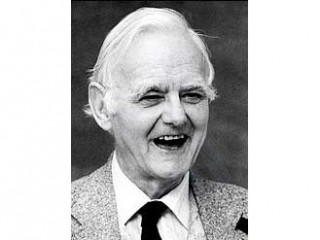
Humphry Osmond biography
Date of birth : 1917-07-01
Date of death : 2004-02-06
Birthplace : Surrey, England
Nationality : English
Category : Science and Technology
Last modified : 2011-12-17
Credited as : psychiatrist , LSD proponent, known for inventing the word psychedelic
0 votes so far
Osmond was born in Surrey and educated at Haileybury. As a young man, he worked for an architect and attended Guy's Hospital Medical School at King's College London. During World War II, Osmond trained to become a psychiatrist while active as a surgeon-lieutenant in the Navy.
After the war, Osmond and his colleague John Smythies perceived a similarity between the effects of LSD and the early stages of schizophrenia. In 1951, Osmond and Smythies moved to Saskatchewan, Canada to join the staff of the Weyburn Mental Hospital in the southeastern city of Weyburn, Saskatchewan.
At Weyburn, Osmond recruited a group of research psychologists to turn the hospital into a design-research laboratory. There, he conducted a wide variety of patient studies and observations using hallucinogenic drugs, collaborating with Abram Hoffer and others. In 1952, Osmond related the similarity of mescaline to adrenaline molecules, in a theory which implied that schizophrenia might be a form of self-intoxication caused by one's own body. He collected the biographies of recovered schizophrenics and held that a psychiatrist can only understand the schizophrenic by understanding the rational way the mind makes sense of distorted perceptions. He pursued this idea with passion, exploring all avenues to gain insight into the shattered perceptions of schizophrenia, holding that the illness arises primarily from distortions of perception.
In 1953, Osmond provided English author Aldous Huxley with a dose of mescaline.As a result of his experience, Huxley produced an enthusiastic book called The Doors of Perception, describing the look of the Hollywood Hills and his reactions to artwork while under the influence. Osmond's name appears in the four footnotes in the early pages of the book, references to the articles Osmond wrote regarding medicinal use of hallucinogenic drugs.
Osmond first offered the term "psychedelic" at a meeting of the New York Academy of Sciences in 1957. He said the word meant "mind manifesting" (from "mind", ψυχή (psyche), and "manifest", δήλος (delos)) and called it "clear, euphonious and uncontaminated by other associations." Huxley had sent Osmond a rhyme containing his own suggested invented word: "To make this trivial world sublime, take half a gram of phanerothyme" (thymos meaning 'spiritedness' in Greek.) Osmond countered with "To fathom Hell or soar angelic, just take a pinch of psychedelic."
Osmond is also known for a study in the late 1950s in which he attempted to cure alcoholics with LSD, which he claimed achieved a fifty percent success rate.Osmond noticed that some drinkers were only able to give up drinking after an episode of delirium tremens and tried to replicate this state in patients through giving them high doses of the drug. This came to be known as the psychedelic treatment model, contrasted to the psycholytic model that used low doses to help release repressed material from the mind which it was hoped would help the psychotherapeutic process.One of Osmond's patients during this time was Bill W., co-founder of Alcoholics Anonymous; however, rather than a delirium tremens type of experience, Bill W. wanted instead to try to recapture a mystical state of consciousness that he had experienced, years earlier, without a drug.
Osmond participated in a Native American Church ceremony in which he ingested peyote. His hosts were Plains Indians, members of the Red Pheasant Band, and the all-night ceremony took place near North Battleford (in the region of the South Saskatchewan River). Osmond published his report on the experience in Tomorrow magazine, Spring 1961. He reported details of the ceremony, the environment in which it took place, the effects of the peyote, the courtesy of his hosts, and his conjecture as to the meaning for them of the experience and of the Native American Church.
Beyond his interest in drug- and vitamin-assisted therapeutics, Osmond conducted research into the long-term effects of institutionalization, and began a line of research into what he called "socio-architecture" to improve patient settings, coining the terms "sociofugal" and "sociopedal", starting Robert Sommer's career, and contributing to environmental psychology.
Osmond's interests included the application of Jung's Typology of personality to group dynamics. He and Richard Smoke developed refinements of Jung's typology and applied them to analysis of the presidents and other world figures.
Later, Osmond became director of the Bureau of Research in Neurology and Psychiatry at the New Jersey Psychiatric Institute in Princeton, and then a professor of psychology at the University of Alabama in Birmingham. Dr. Osmond co-wrote eleven books and was widely published throughout his career.
Osmond died of cardiac arrhythmia in 2004.
















